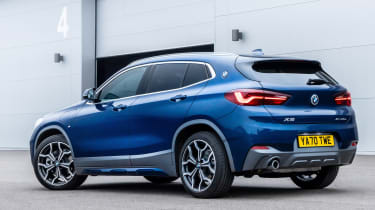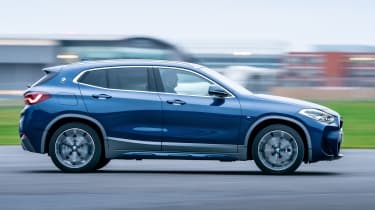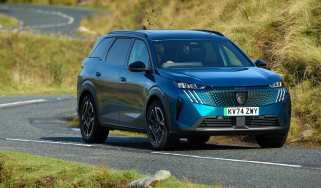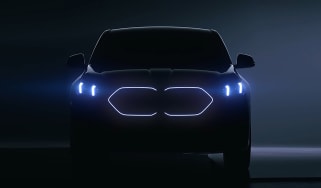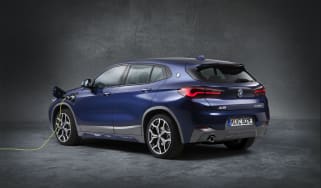BMW X2 hybrid review
BMW’s stylish coupe-SUV is too expensive and compromised in plug-in hybrid form to really make sense
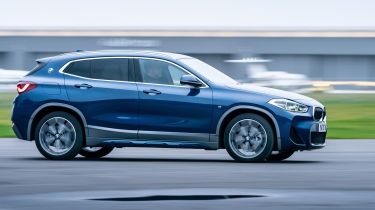
Pros
- Decent performance
- Good handling
- Sharp looks
Cons
- Too expensive
- Not very practical
- More efficient PHEVs available
| Car type | Electric range | Fuel economy | CO2 emissions |
|---|---|---|---|
| Plug-in hybrid | 32 miles | 157mpg | 40g/km |
Plug-in hybrid power has now spread to almost the entire BMW range, having initially been confined to just the popular 330e executive saloon. Now, you can get everything from the X1 family SUV to the 7 Series luxury limousine with a battery and plug. Here, serving as a sportier-looking alternative to the X1, is the BMW X2.
As with all plug-ins from BMW and every other brand, the X2 xDrive25e will appeal chiefly to company-car drivers, who stand to save more than £3,500 a year compared to running an identical X2 with just a petrol or diesel engine. That’s thanks to its 40g/km CO2 emissions and 32-mile pure-electric range getting into an ultra-low Benefit-in-Kind (BiK) tax band.
Having spent some time with the car, we’d say you can probably bank on more like 25 miles in real-world driving but in any case, if your daily mileage is relatively short, you can save a whole heap more money on fuel bills – whether you’re a company user or a private buyer. That’s with as much electric driving as possible, of course; drive with a flat battery and you can expect to achieve more like 35-40mpg. Mind you, the same is true of the X2's many rivals, which include the Mercedes GLA, Volvo XC40 and Audi Q3 plug-in hybrids.
So what can the X2 offer that they don’t? Unfortunately, it loses out to the Mercedes when it comes to interior appeal. The BMW’s cabin is solidly built and well laid-out, in the best traditions of the brand, but the GLA’s feels much sleeker and more up-to-date: it’s just more desirable overall.
The X2 is also trumped by rivals for practicality. Okay, the X1 is there if you want a more conventional shape, but if you're smitten by the X2’s coupe-like lines, you should be aware that rear headroom in particular is quite tight. Boot space is better: there’s 25 litres more than in the GLA on paper, along with underfloor cable storage, although the Mercedes’ boxier shape gives it the edge with rear seats lowered. There is more boot space here than in plug-in hybrid hatchbacks like the Audi A3 and Mercedes A-Class, and marginally more than the DS 4 E-Tense, too.
It’s a mixed bag inside, then, but what about the driving experience, where BMWs usually excel? In electric mode, the X2 hybrid is as blissfully silent as any plug-in, but road noise did become more noticeable the faster we went in our test car, which was wearing large 19-inch alloy wheels shod in run-flat tyres – not an ideal combination for refinement.
The suspension doesn’t deal well with rough roads, either, and the steering is lighter than you’d expect a BMW’s to be. It is precise, though, and combined with typically good body control means the X2 is still satisfying to thread down a twisty road – even if you’ll be wincing a bit over any potholes.
Progress is swift, too, with a 6.8-second 0-62mph time courtesy of a 217bhp power output from the combination of a 1.5-litre, three-cylinder petrol engine and electric motor. A smooth-shift six-speed gearbox and standard four-wheel-drive both add to the sensation of effortless progress in all weather or road conditions.
Achieving those running-costs savings we mentioned earlier requires plugging the X2 in every chance you get, but it only takes around three hours to top up from a typical home charger, so it’s easy to ensure you start every day with a full battery. You do need to make maximum use of the electric range, especially if you’ve bought privately, as even the entry-level X2 hybrid costs over £40,000 – a good deal more than the cheapest petrol or diesel version and enough to attract higher-rate road tax the first five times it’s renewed.
Because the X2 PHEV costs more than £40,000 and lands in the higher tax bracket, it might not work out cheaper to run than a standard petrol or diesel engine. Spec-for-spec, it’s £2,500 more to buy than the X2 xDrive20i petrol, and some £8,000 more than the entry-level front-wheel-drive sDrive18i car.
In summary, the X2 xDrive25e feels like a compromised proposition in a number of ways. For those who really want to go green, there are already several fully electric SUV options at or around this price point, and if you want to stick with a plug-in hybrid, better-value and more practical alternatives aren’t hard to find, either. With the new BMW X1 now on sale, the X2 is starting to feel a little outdated and on borrowed time.
